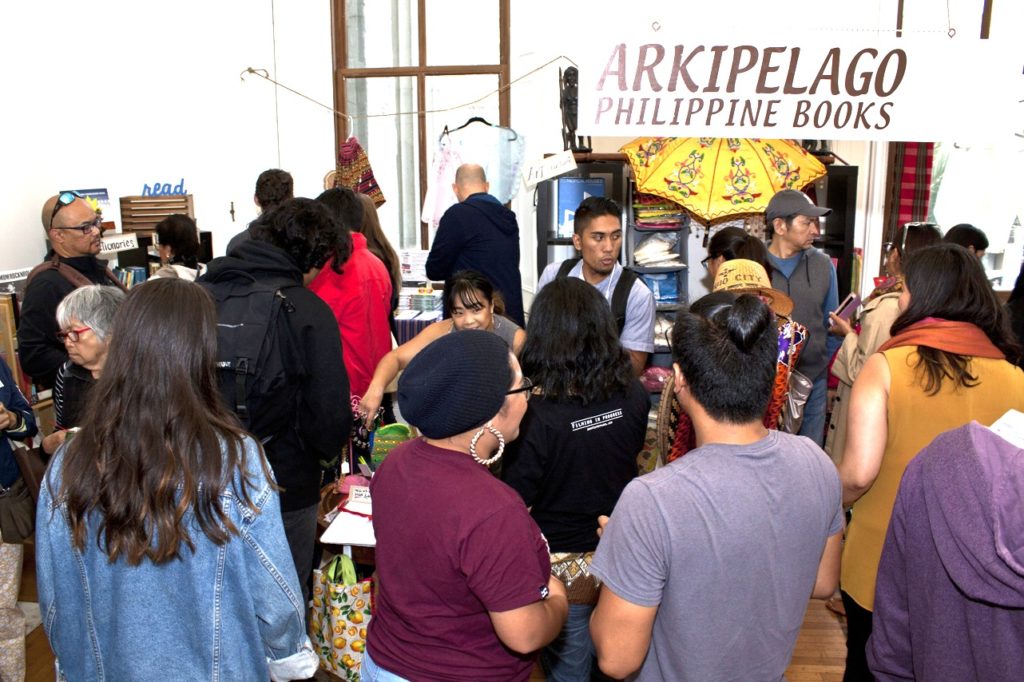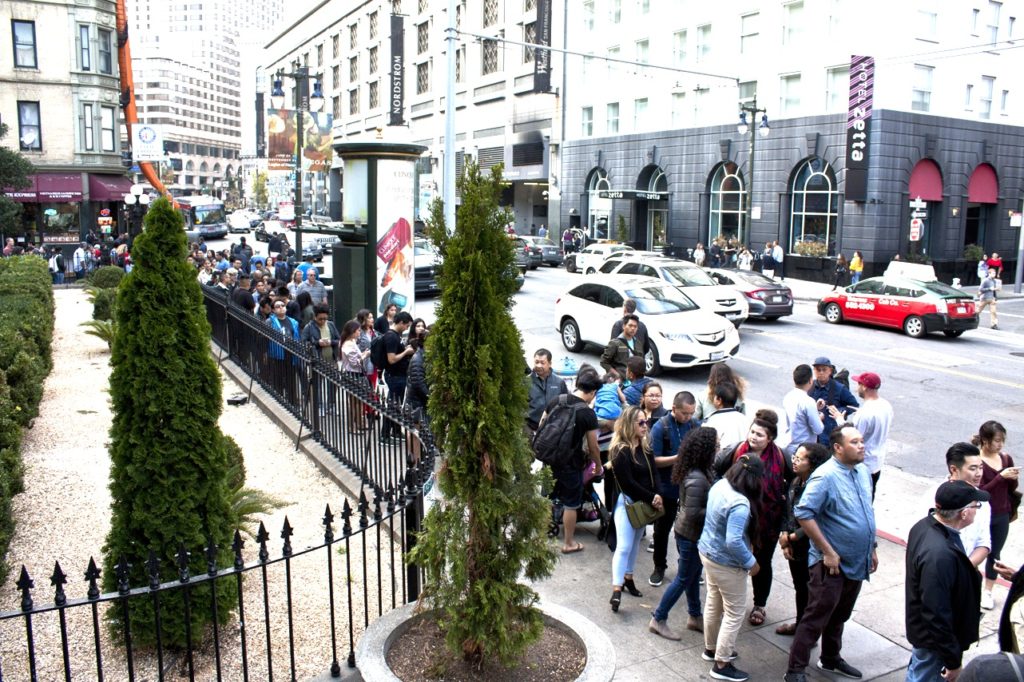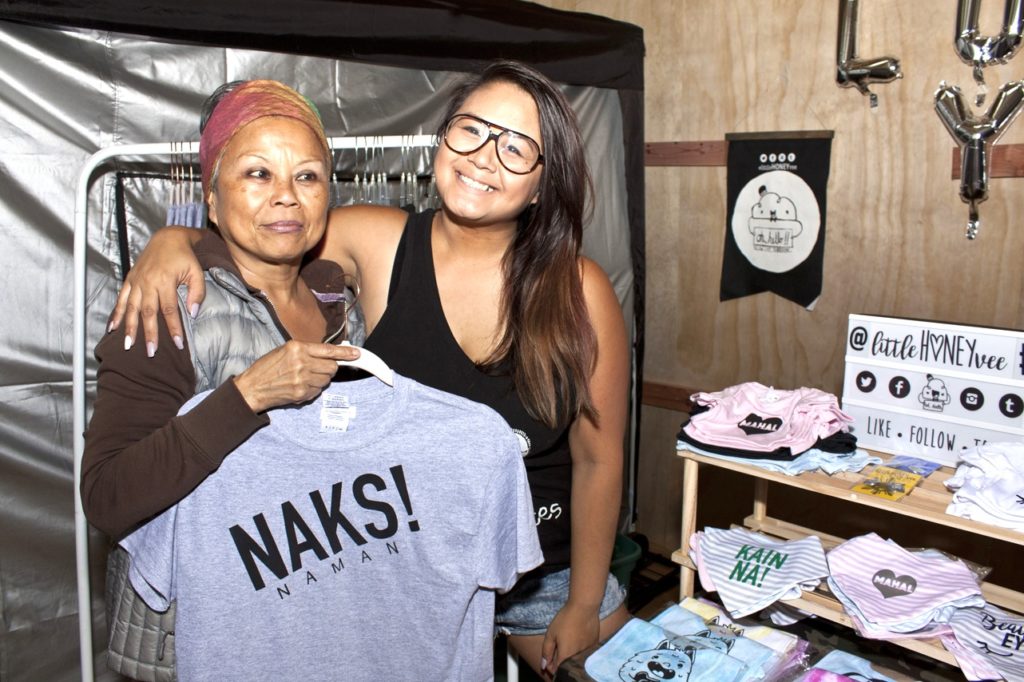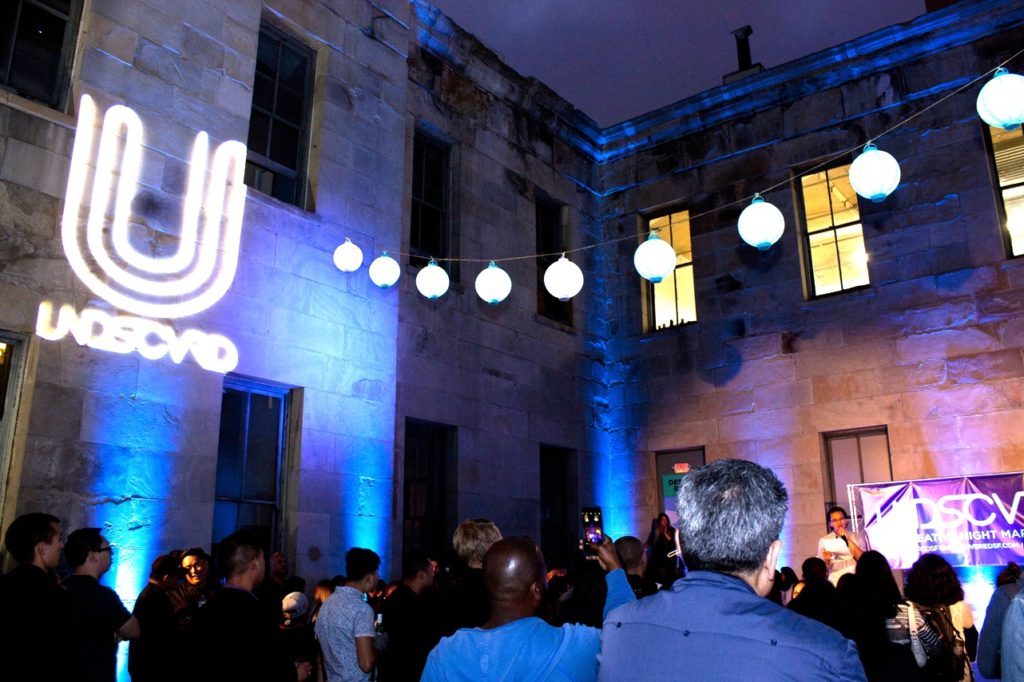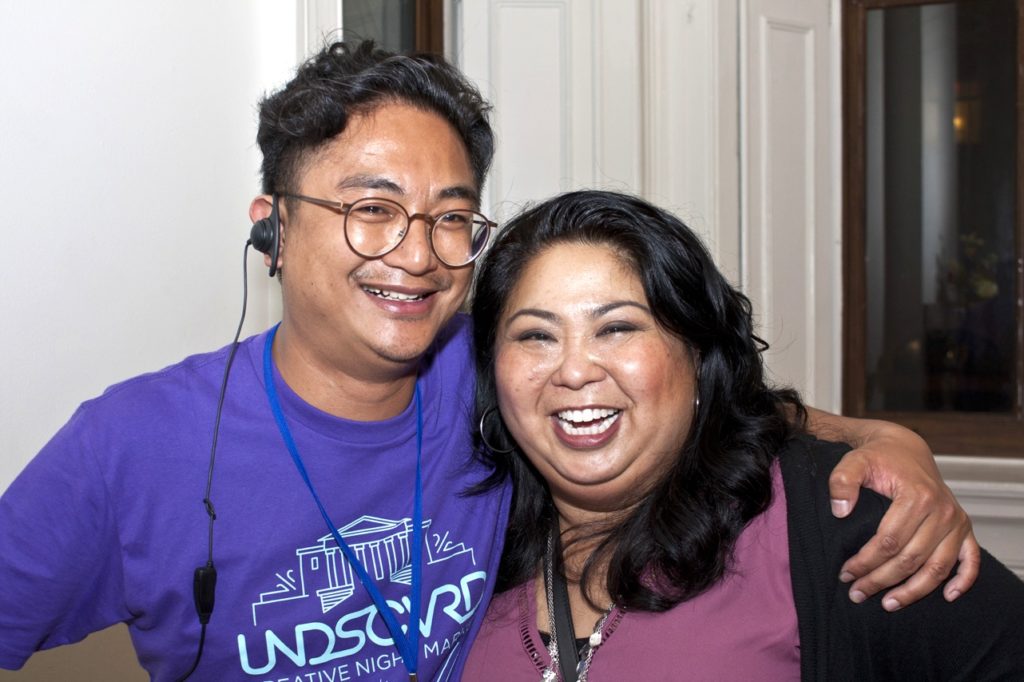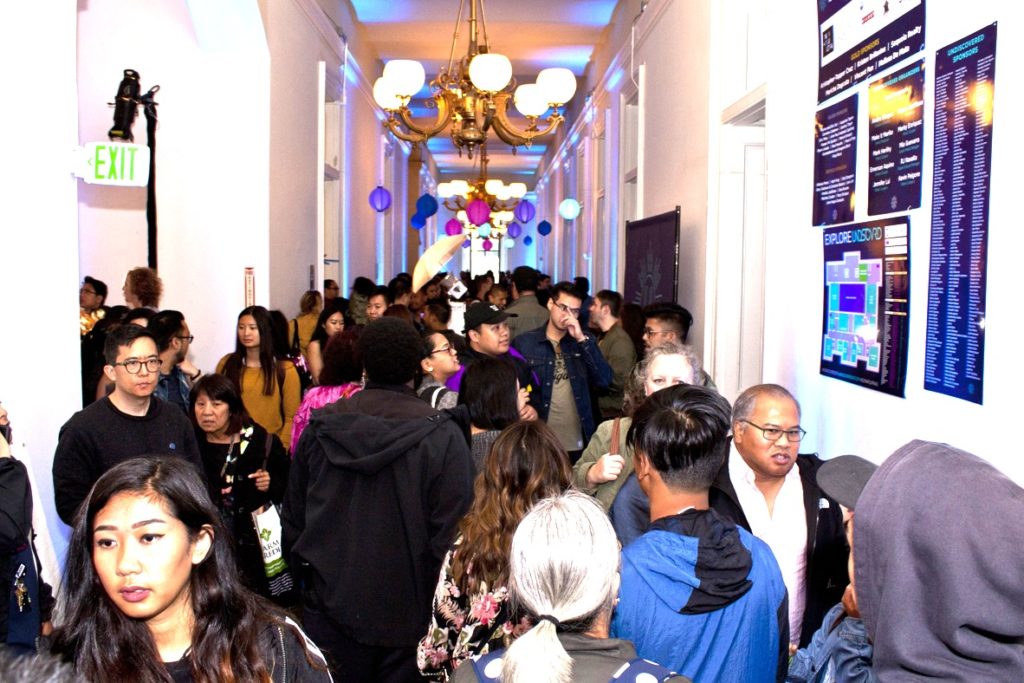San Franciscans throng Filipino night market opening
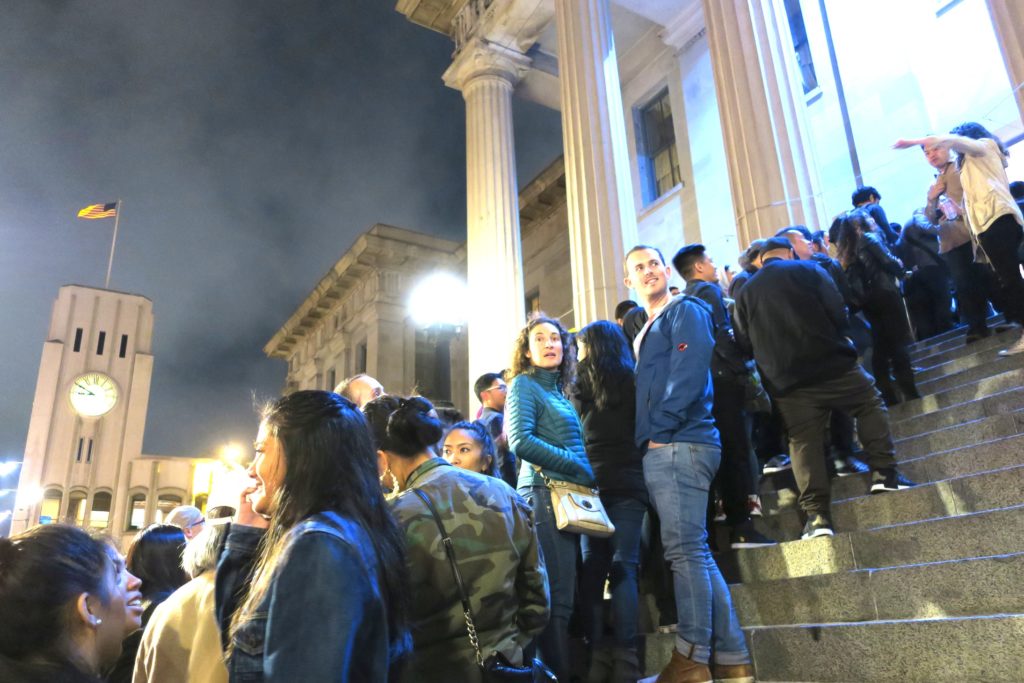
A stream of people at the steps of the Mint Buiding’s main entrance to Undiscovered SF. INQUIRER/Wilfred Galila
SAN FRANCISCO – Dubbed as a “creative night market,” the first ever Undiscovered SF opened with unexpected and overwhelming success at the SF Mint and the Mint Plaza at 88 5th Street on August 18, 2017.
“I had my real doubts. I’ve been thinking about what it was going to be on opening night,” Desi Danganan, chief architect of the SOMA Pilipinas economic development committee, executive director of Kultivate Labs, and serial entrepreneur, said.
“I thought that I was gonna cry … I feel really good.” A never before seen gathering of this size and scale showed up on opening night.
Long before doors opened at 6 p.m., a big crowd had converged on the steps of the main entrance to the building and spilled out onto the sidewalk of 5th Street. The diverse crowd with a large presence of Filipinos made up the three main arteries of guests that lined up and snaked around the block for the free and all-ages event that ran until midnight.
Incubator
Undiscovered SF is the brainchild of Desi Danganan and his team at Kultivate Labs, a non-profit business incubator focusing on developing SOMA Pilipinas, the Filipino Cultural Heritage District in the South of Market.
“Kultivate Labs has a multi-prong strategy for SOMA Pilipinas,” Danganan said. The first step is “to do a night market to showcase the very best in our arts, music, food and emerging retail brands.”
Inspired by Asian night markets, the “curated collection of emerging artists and merchants” is a “venture designed to jump-start economic activity and public awareness of SOMA Pilipinas.”
Undiscovered SF, the first of a continuing series of night markets happening every third Friday of the month, featured 12 rooms, the building’s courtyard and the Mint Plaza adjacent to the building that housed more than 50 retail and food vendors, various art exhibitions, music acts, including a number of activities provided by community members and groups as well as an exhibition dedicated to the history of SOMA Pilipinas and the Filipino diaspora.
Vendors, artists
Among the diverse retail vendors and artists, various Filipino entrepreneurs and exhibitors offered a range of products from the traditional to the traditionally inspired.
From Benicia in the Bay Area, Island Memories SF produces 100-percent soy candles with an all cotton wick. The highest quality oils are used with bottles made from recycled glass.
“Everything is as natural as we can make it,” proprietor Patricia Aranas, said. “We don’t add any color, we don’t add any preservatives. People with a lot of allergies are still able to use our products.”
Little Honey Vee, owned and operated by Vee Caragay who also designs and creates her merchandise, sells, among other things, apparel for both adults and babies.
“I’ve started this new thing that is Taglish inspired, a mix of Tagalog and English,” Caragay said. “So I have apparel that says “Beautiful Eyes,” “Kawawa Face,” “Naks Naman”–those types of quotes we grew up listening to and saying.”
Showcases
Showcasing indigenous fabrics and designs were Jenny Bawer Young and Rachel Lozada of Kalingafornia Laga, an indigenous weaving circle of Filipino and Filipino American women under the tutelage of Bawer Young, a native Kalinga.
“All products were brought over from Jenny’s hometown, Mabilong in Lubuagan in the province of Kalinga. All made by female indigenous weavers as part of their economic income,” Lozada said. “It’s for us to support their art practice and promote the traditional indigenous practices here in the diaspora.”
Artist Kim Arteche brought her interactive art project to the mix. “The Duster Project” explores ideas about the Filipino matriarch that she plans to continue doing in future night markets.
“We have a few dusters that you can try on and dress up like a lola (grandmother),” Arteche said. “I am also collecting stories about people’s lolas and giving out free palo (spank),” she added while raising a tsinelas (slipper).
“There’s comedy behind it, and also just getting people to think about their lolas… stop and think about something while you’re walking around and consuming people’s products and stuff.”
All were proud and thankful to be a part of the unprecedented gathering.
“It’s great, there’s a lot of Fil-Am entrepreneurs and a lot of creative people. I’m really thankful to be a part of it,” Caragay said.
Coming together
“I feel that the Filipino community has a hard time coming together as a group,” Aranas said. “And it’s nice to see the community coming together pushing people up. We’re promoting everybody’s businesses; it’s a nice feeling. San Francisco has really come together to make this work.”
“I’ve never seen so many Filipinos in one place,” Karla Korazon of Isla Kultura, native Philippine jewelry and accessories, said. “I hope that I get invited every third Friday of the month and that this continues.”
“It’s amazing! It’s not just Filipinos that we have here in the crowd, really everyone representative of the San Francisco Bay Area. We are very excited and proud to be a part of this!”
The venue known as the Old Mint and the Granite Lady was built in 1874 and was the second building that housed the San Francisco branch of the U.S. Mint, which opened in 1854 and served the gold mines during the gold rush. A National Historical Landmark and a California Historical Landmark, it was one of the few buildings to survive the 1906 earthquake.
Symbolic
Having the event in a historical structure that has stood the test of time and calamity at the heart of the Filipino Cultural Heritage District is symbolic of the resilience of a community, vital to the cultural and economic fabric of the city, that has survived and thrived in spite of being under a cloak of invisibility, a history of displacement and facing a constant threat of gentrification.
“By having it inside an old structure that survived the 1906 earthquake, the curiosity of knowing the old and the tradition in the neighborhood is one way of expressing our gratitude to the city in recognizing it as a cultural heritage district,” MC Canlas, head of the SOMA Pilipinas historical preservation committee and community historian, said.
Post-World War II San Francisco was a testing ground for the urban renewal movement that swept across the U.S. displacing communities, especially so-called minorities, in its wake. This included Manilatown on Kearny Street that culminated with the fall of the I-Hotel in 1977, displacing the Filipino community from their homes and businesses and the area of culture and heritage that they have established. Many Filipinos relocated to the South of Market and by 1990 made up 30 percent of the district’s population.
Segregation
“It was because of segregation that we really couldn’t live anywhere else,” Dawn Bohulano Mabalon, historian and professor of history at San Francisco State University, said. “The South of Market, the Fillmore, the Excelsior, the Mission is where Filipinos lived.”
On April 2016, San Francisco’s Board of Supervisors passed a legislation that declared a large part of the South of Market as a Filipino Cultural Heritage District known as SOMA Pilipinas. “The vanguard of SOMA Pilipinas is non-profit activists,” Danganan said. “And non-profit activists are not motivated by making money, they are motivated by the heart. We’re going to show San Francisco how we can redevelop without displacement, without getting rid of the artists, by being intentional, by being emphatic.”
It took about a little over a year to develop Undiscovered SF. “A year ago at this time, it was just a keynote presentation that I brought around to the community,” Danganan said. “I was trying to sell everybody my dream.”
Danganan went to a SOMA Pilipinas committee meeting on December of 2016 where he saw that there was no one representing the design and business side of the community and took the initiative to get involved.
“I saw the opportunity to build that bridge and represent that side of our community,” Danganan said. “Because if we were going to do this, were gonna need all sides.
Main challenge
The main challenge to realize his vision and get the project going was gaining the trust and getting the approval of the community. “I’ve actually been labeled and protested as a gentrifier,” Danganan said. Coming back into and spending time with the community was key in being welcomed and understood. “Having the activists feel me out and understand that my intentions are heartfelt and in the right place,” Danganan said.
After gaining the approval of the community, another challenge emerged. As a crowd-funding expert who has an agency that specializes in such, “we put a very public crowd-funding campaign out there, and we didn’t hit our goal,” Danganan said. “It was the amount of money that I needed to make the first one happen and we were $20K short.”
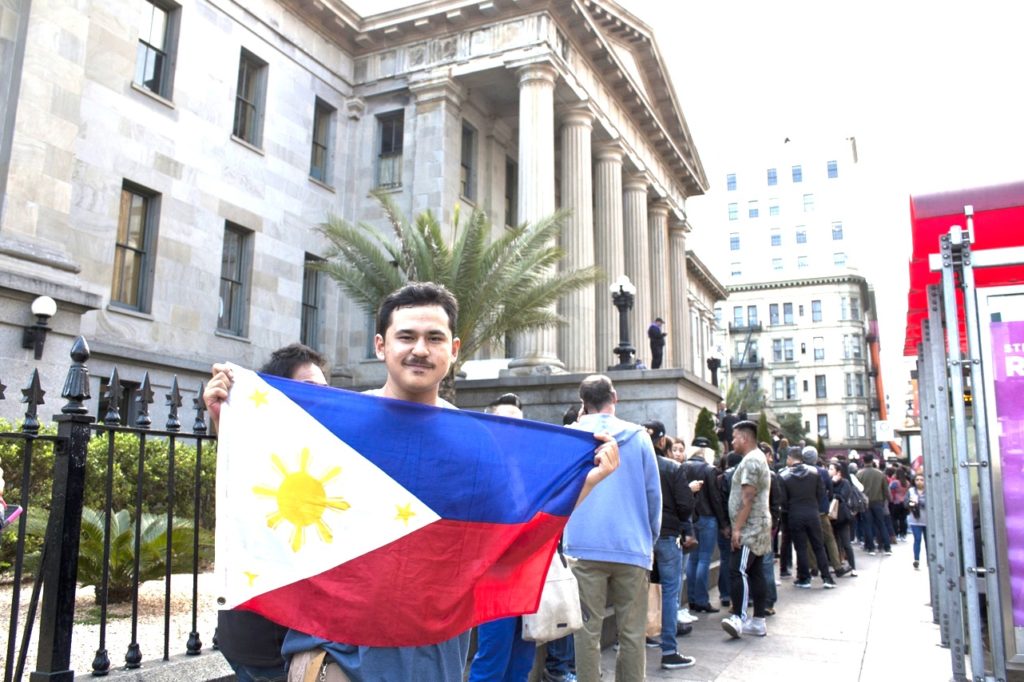
Filipino pride in front of the Old Mint-Building on 5th Streetat on opening of Undiscovered-SF. INQUIRER/Wilfred Galila
The cost of putting up a single night market of this size and scale is not cheap, but Danganan took the risk. “Going into this, I had a decision to make. It’s either I don’t do it and wait until I raise another $20K or I take that leap of faith,” Danganan said. “I took that leap of faith, and now you see the results.”
Overwhelmed
“It’s incredible, it’s amazing! I’m completely overwhelmed,” Mabalon said. “One of the things Desi and I talked about a year ago was ‘if you build it, they will come.’ And they came… and they keep coming.”
The opening of Undiscovered SF is a landmark moment in Filipino American history.
“There’s certain historical moments in our community that we look back to as touchstone moments,” Mabalon said. “This is one of those moments, when people will look back and say, ‘remember that time we we’re all together at the Mint when the night market started.’”
“This monthly event gives the Filipino community an opportunity to celebrate Filipino American art, culture and food with friends and community from all over the Bay Area,” Bernadette Borja Sy, director of the Filipino American Development Foundation and Bayanihan Community Center, said.
“The heart of our Filipino culture is being uncovered among the living, thriving Filipino American community that live, work, gather, create, and build in SOMA Pilipinas over many years.”
“There’s some things to figure out, but it’s an incredible moment,” Mabalon said. “People want community. We wanna see each other, we wanna be together, we wanna have fun together, spend money and support our artists.”
“That’s the undiscovered energy of the Filipino community, and we’re sparking it right now,” Danganan said.

